Film historical environment
|
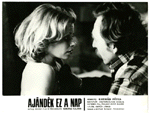
A Priceless Day (1979), Cecília Esztergályos and Pál Hetényi
122 KByte
|
Péter Gothár’s career proceeds parallel with current film historical tendencies. All this means that films are not independent from current styles and trends, and yet they are not identical with them; as if the director was taking another way to get to the same place. As a consequence of this situation and temper, Gothár’s perspective is always slightly different from the position signaled by trends, and he either proves to be more radical than the mainstream, or more conventional among the avantgards. Nevertheless, his career is worth taking a look at concerning film historical tendencies, too.
Already the beginning of the career marks the favorable position for the director of being inside and outside at the same time. As opposed to his peers, the field for the formation of style and outlook for Gothár is not the Béla Balázs Stúdió, but the television which is not so popular among film-makers. At college he graduated from Károly Makk’s class – which transformed from a class of television directors into a class of film and television directors – in 1975, and launched his career with teleplays and documentaries. And although he did not go on like this, and he did not become a television director either who occasionally shoots movies – just like Sándor Szőnyi G. or János Dömölky at that time -, he continues working for the television besides shooting movie films. For the beginner director, the television ?functions” like a sort of Béla Balázs Stúdió: this is where he learns the profession, tries the stylistic elements that will later appear in his movies, the narrative procedures or performers, what is more – as a parallel with the turn of the generation and the change of approach in the studio – he is happy to return to television later for the sake of ?experimenting”, the flexible form of a study. His early teleplays, however, forecast the unique nature of his directing career, different from those starting from Béla Balázs Stúdió. The intellectuality of 1970es’ Béla Balázs Stúdió is basically determined by the different forms of documentaries, the (post)-semiotic film language experiments attached to Gábor Bódy, as well as the endeavors of style intertwined with other types of arts (theatre, fine arts, music) and the synthesis of all these. As opposed to this, Gothár’s first television productions are stylized, dramatically structured pieces that are built upon a strong literary foundation and place the performance of the artists into the focus (Upper Austria, Trade), and this director-character is made even sharper by his activity as a theatre director which was launched in the late 70es with his first feature film and which runs parallel with the movie films. Thus the differences and similarities between the career and the film historical tendencies are already forecast by the school years and the period of practice as well: Gothár has other instruments for describing the common experience, the similar stories and the situations than his contemporaries. In his feature films, opposed to his most excellent contemporaries, Gothár prepares movies not following or opposing the traditions of film history and the language of form, or the demand to renew the form of the film visually and narratively, but he is searching for the new opportunities to tell a story, to create the right atmosphere and to express emotions. He achieves the same aim, but his different approach has visible aesthetic consequences: the virtues of building up the scene, dramaturgic structure and instructing the performers, but also the deficiencies of reflexive linguistic functions, quotation marks, and the conscious gestures of the writer.
On the basis of all these, Gothár is closest to the art of András Jeles and Gábor Bódy, whose art also started to blossom around the turn of the 1970es and 1980es. With Jeles he has the use of material and the absurd-grotesque stylization in common, while he is connected to Bódy as regards the use of language and post-modern narration. His film Time, which is basically a film full of inter-textual performances, draws the attention to these connections with spectacular hommages in a highly concentrated way, in two attaching scenes. The clochard-couple in the park is arguing about who called the other one ?Little Valentino” in Paris and when, while Kuruc horsemen gallop up to the chess-players, recalling the Hun fighters of the ?factory visitors” from Dream Brigade. Immediately after the quotations of Jeles, we see a Bódy-allusion: the way of the leading character continues in one of the scenes of the closing sequence from Dog's Night Song, the subway in Felszabadulás square, where he comes across a man on the run. But earlier, when seeing the distant image of the nightmarish holiday house, we recall the empire of Baron Zedlitz from Psyché (the set designer of both films was Gábor Bachman). Jeles’ theatre works also influenced Gothár, who said that Jeles’ direction of The Man Who Laughs was a definitive experience2. On the other hand, Film Week jury member András Jeles’ enthusiasm is worth mentioning over Letgohang Vaska 3 which can be explained by the fact that Vaska is indeed the ?heritage of Dream Brigade from a certain aspect4” – as Miklós Győrffy puts it.
The launch of Gothár’s feature film career coincided with that of András Jeles’, but what is even more important is that both films mark the change of era in the 1970-1980eswith similar poetic tools, only in a different thematic and stylistic medium. Reflecting to the fictional documentaries of the 70es, Jeles’ Little Valentino (1979) creates the form of ?absurd documentarism”5, while Gothár’s A Priceless Day (1979) also reacts in a similar way, stylizing the typical generations films of the 1970es towards absurd grotesque. The plot focuses on the motive of the ?flat”, a theme present in several movies of the era, but the absurd turn arising from the logic of grotesque events and the reflection elements woven into the flow of narrative distance us from the realistic, socially critical attitude and bring unusually close the destructive, distorting effect of the sociologically precisely described medium on human relations and faces. Both Jeles and Gothár refuse analysis and moralizing self-reflection: their heroes do not really understand what is happening to them, they are just drifting helplessly, acting without motivations. Their situations are not interpreted through their circumstances or themselves, but the directors’ perspective with external reflection elements, including the denial of the requirements of the genre or the captions written on the screen (Little Valentino), pushing to the back the sociological aspect or the alienating effects that break the illusion of reality (A Priceless Day)6. The two films’ era-marking position derives from the stylization of the documentarist and the social-analytical method and theme carried out with the same purpose but with other instruments.
Gothár’s second feature film is different from the previous one in terms of theme and style, and is linked to a ruling tendency of the 1980es, of course, in a unique way. As opposed to the subjective, director’s stylization and ?aesthetism” of the 1970es, by the end of the decade, the demand for stories with conventional narration which examine the individual’s historical and moral responsibility strengthens again. Time Stands Still (1981) is related to the ?charm of professionalism” that brought the academic change of style, as well as to the group of intellectuality analytic ?fifties films” that stopped in the 1960es7, but this relationship can best be traced in the differences. Time Stands Still tells a complete, closed story of the 1960es, invoked by strong atmospheric power. The events set in a school and described from the adolescents’ point of view make us remember several earlier literary and film experiences, but the traditional genre of the educational novel is also conjured here. The form of classic narrative is strengthened by the mythical solutions that pervade the description of the environment and of the performers, through which the film liberally handles the issue of historical authenticity: it does not evoke the 1960es, but the memories of the period. The pillars of grand narrative receive an ironic overtone, since the orientation points of the educational process are missing, while the figure embodying the myth of the era simply disappears from the hero’s life. The ?idea of the personality’s timely self-creation” – as Ernő Kulcsár Szabó describes the classic poetry of the Bildungsroman8 - dissolves in the film: ?time stands still”.
Concerning the films of the 1950es, Gothár’s film definitely seems to be a counterpoint, since it places the process of development and realization of the individual into the 60es (instead of the tragic 50es) that lack moral challenges and offer the ?alternative” to compromise. With all this Gothár does not mean to summon the committed ?active” spirituality of the 60es – we know so well from Hungarian movies -, but ?tells a story of how heavy oppression becomes the morassing and confined world, against which even political resistance becomes morassed , so opposition can only be realized in a radical way.9” Beyond the ironically handled plot and narrative of Time Stands Still, we can recognize the antecedents of A Priceless Day, Time, Just Like America and Melodrama, also as the first of the educational and family novel that spans across the whole career. Yet the evoked narrative form and the mythic elements prove to be strong enough to make the film – as opposed to the era portrayed in it – a legendary and cultic piece.
Following these two internationally acknowledged films, Gothár’s next feature film is completed only four years later. The hiatus, not so obvious that time, could be filled with a film to be shot only twelve years later. The director said in an interview that in 1982 from Ádám Bodor he received the manuscript of the short story The Outpost, for which he had been trying to get money for years, but the film could finally be shot in 1994.10 (The short story was first published in Eufrátesz Babilonnál in 1985.) It might appear profoundly unhistorical to deal with this piece now, yet, as regards Gothár’s career and the film history of the early 1980es, it might be worth considering to what extent it would have changed the oeuvre and the image of the era, if The Outpost – obviously not exactly like in 1994 – had been filmed around 1982-83. In fact, for Gothár, the plan to adapt The Outpost signaled the well-grounded intention to continue the classic narrative form of Time Stands Still (which seems surprising from the perspective of narration of Gothár’s two forthcoming films, Time and Just Like America, interwoven with reflections), as well as the more abstract, metaphoric direction of broadening the meaning. This latter endeavor will be realized in his films that are shot at the turn of the 80-90es, looking for the ?ways to abstract”11, called ?black series”12. Thus the tendency that radically refused the traditions of the Kádár-era could have appeared in the history of Hungarian film around the middle of the 1980es, but the cultural policy did what it could to prevent the making of a film that signals the end or the change of the era, so the film historical threshold was shifted towards the political threshold. Similarly to The Outpost, Béla Tar’s adaptation of László Krasznahorkai’s novel Satantango could not be made immediately after its publication in 1985: first ?instead of” the Satantango, Damnation was shot in 1987 to launch the black series with the contribution of Krasznahorkai as a script writer, while the shooting of Satantango could only begin in 1991, and the premier of the film took place in 1994. This circle also includes András Jeles’ film Dream Brigade that does not simply reject the tradition of the Kádár-era, but destroys it. Although the director could shoot the film in 1983, the audience could see it in only in 1989, after seven years in the box. So The Outpost could have played a major role, along with many other films not made, or banned at the end of the prolonged film historical era, when laying the ideological and stylistic foundations of the new period. All this is supported by the fact that when the film was finally completed in 1994, it lost its position at the end of the era and it does not signal the end of a period in the director’s career either, because Letgohang Vaska, shot the following year and his films made since then continue the absurd-grotesque stylization seen in pieces before the Bodor-adaptation. This makes The Outpost an isolated creation in his career, but it does not diminish its value.
Let us return to the facts without forgetting the plan for the Bodor-adaptation! Gothár’s third and fourth feature films closely link in theme and style. Time (1985) and Just Like America (1987) with contribution from Péter Esterházy as a writer, continue the absurd-grotesque stylization of the films analyzing the generation’s mood, but as regards the form, a new element appears: the expansion of the limits of conventional narrative style, as well as choosing the process of narrative, the ?difficulty of narrative” as a theme – in the spirit and with the help of post-modern prose. The sharp turn of style is signaled by the omission of this latter one, i.e. the epic forms. The change can clearly be seen when comparing the art of Péter Esterházy and Ádám Bodor. Esterházy is the leading figure of the 70-80es’ new prose, who renews Hungarian literature not only in theme, but also regarding the use of language, while Bodor ?aims to preserve and not to renew the style”13. With the adaptation of The Outpost, Gothár continues the post-modern tradition of Hungarian film, while his films based on Esterházy’s scripts are connected to the post-modern change of era, although the order of the two was changed by culture policy – definitely not in the name of the post-modern.
With Time and Just Like America, Gothár approaches the trend called new sensitivity that blossomed in the mid-1980es, but again in his own way. Most films that abound in radical solutions in terms of narration and visuality, were made in Béla Balázs Stúdió and the dying Társulás Stúdió, and remained in a rather peripheral position. Only Gábor Bódy’s Dog's Night Song made it to the traditional movie distribution, or perhaps János Xantus first feature films14 that continued the trend in a popular form. And Péter Gothár’s two films with contributions from Esterházy. Perhaps this is the point where the director’s commitment to the spirit of the age, as well as his independence from trends and groups representing it can most strongly be felt. Time and Just Like America are films shot among professional circumstances with well-known performers that reveal the ?general state of mind” of the public life of the mid-1980es in a critical way, continuing the 70es tradition of film describing the mood of the generations, but in forms also making use of the radically anti-conventional, linguistic-stylistic solutions of the post-modern new sensitivity of the 80es, which can rarely be seen in mainstream movies.
With the completion of the Esterházy-movies, the director’s career cannot be linked to any film historical era any more. Approaching the present, it becomes increasingly difficult to find the tendencies that could be outlined, yet, these tendencies have hardly anything in common with the director who follows his own way persistently. Melodrama (1990) is a film that aims to deal with the shock caused by the political changes, the restart and the ?redefinition” that the middle generation had to face; it is a film not lacking confusion, aggression or self-pity either, and has similarities with other films only in terms of the situation of the generation (Ferenc András: The Last Summer, 1990; Zsolt Kézdi-Kovács: And Still…, 1991), but considering its style, we cannot find any film that would immediately turn earlier political taboos absurdly grotesque. The ?shift of time” in The Outpost has already been mentioned. When the film was completed in 1994, its simple metaphors built into a minimalist set of tools, its demand for universality that steps over exact, recognizable and identifiable motives placed it into the class of black series (although it is colorful, just like all the rest of the director’s films). One year later Letgohang Vaska (1995) signals that The Outpost does not mean a turning point in the director’s career: although not in realistic form, but within the frames of the tailor-made genre of lager-tale, Vaska continues the absurd-grotesque stylization of his earlier works. His films shot since then also follow the same track: both Passport (2000) and Hungarian Beauty (2002) use the sociological basic situation as a starting point, making use of the director’s trade mark style to follow the life-shaping consequences of ?post-Soviet capitalist realism” which is frighteningly similar to Soviet-style social realism.
From the 1990es (the year of the political changes) Gothár’s career has been independent from the endeavors of his contemporaries. All this is the consequence of the fact that basically neither his style, nor his thematic interest changed. He continues to tell stories about people and situations confined into social-historical circumstances, constantly struggling for freedom/love-situations that are grotesquely moving from the players’ part while painting a scary and absurd image of ?time that stands still”. The continuity that steps over the threshold of the era draws the attention to two important, seemingly contradictory features of the career: Gothár is not interested in the analysis of the circumstances, his stories and situations do not illustrate social or historical conditions: yet, the permanence of the situations portrayed in his films prove that the external- let alone the internal - limits of self-fulfillment did not disappear or change in spite of the radical transformation of economic and political conditions.
Translated by Andrea Danyi
1 Excerpt from the author’s book Káoszkeringő. Gothár Péter filmjei (Novella Kiadó, Budapest, 2006, 10–21.).
2 Török Tamara: „Teszek egy lépést hátrafelé”. An interview with Péter Gothár Péter. Színház, 2005/2. 38.
3 Jeles András: Vászka és a kisbaba. Gothár, Szirtes. Filmvilág, 1996/4. 8–9.
4 Györffy Miklós: Világunk abszurd részlege: Kelet-Európa. In: Györffy M.: A tizedik évtized. Palatinus – Magyar Nemzeti Filmarchívum, Budapest, 2001, 302.
5 Kovács András Bálint: „Öntudatlan rétegek”. Ábrázolási konvenciók átalakulás a hetvenes évek magyar filmjében. In: Kovács A. B.: A film szerint a világ. Palatinus, Budapest, 2002, 209.
7 For the definition of professionalism see: Kovács András Bálint: Nyolcvanas évek: a romlás virágai. In: Kovács A. B., i. m. 243–249., for the films on the fifties see: Kovács András Bálint: A történelmi horror. In: Kovács A. B., i. m. 283–292.
8 Kulcsár Szabó Ernő: A magyar irodalom története. Argumentum, Budapest, 19952, 181.
9 Kovács András Bálint: Nyolcvanas évek: a romlás virágai. In: Kovács A. B., i. m. 266.
10 Zsugán István: Sorsfordító időink. Beszélgetés Gothár Péterrel. In: Zsugán I.: Szubjektív magyar filmtörténet 1964–1994. Osiris – Századvég, Budapest, 1994, 719.
11 See Györffy Miklós: Az elvonatkoztatás útjai. Új magyar filmekről. Filmkultúra, 1992/1.
12 See Kovács András Bálint: Nyolcvanas évek: a romlás virágai. In: Kovács A. B., i. m. 252–254.
13 Szegedy-Maszák Mihály: Az irodalom történeti és elméleti vizsgálata. In: Szegedy-Maszák M.: „Minta a szőnyegen”. A műértelmezés esélyei. Balassi, Budapest, 1995, 13.
14 Az új érzékenység irányzatához lásd: Milarepaverzió. Kerekasztal-beszélgetés. Filmvilág, 1985/7. 18–27.; Szilágyi Ákos: Az elmesélt Én. Az „új érzékenység” határai. Filmvilág, 1985/7. 27–29.
|
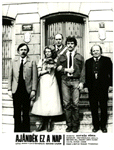
A Priceless Day (1979), Pál Hetényi, Cecília Esztergályos, János Derzsi and Lajos Szabó
147 KByte
|
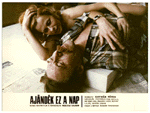
A Priceless Day (1979), Cecília Esztergályos and Pál Hetényi
152 KByte
|
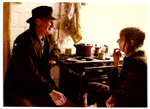
Time Stands Still (1981), Lajos Őze and Kakassy Ági
147 KByte
|
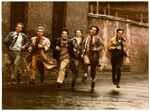
Time Stands Still (1981)
199 KByte
|
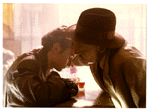
Time Stands Still (1981), Lajos Őze and Kakassy Ági
127 KByte
|
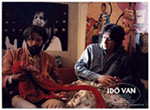
Time (1985), Márk Zala and Tamás Cseh
136 KByte
|
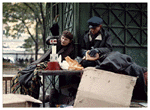
Time (1985)
152 KByte
|
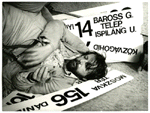
Time (1985), Márk Zala
146 KByte
|
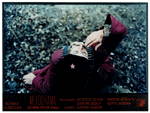
Melodrama (1990), Andrea Söptei
187 KByte
|
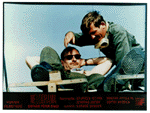
Melodrama (1990), József Szarvas and Attila Magyar
168 KByte
|
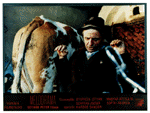
Melodrama (1990), Andor Lukács
174 KByte
|
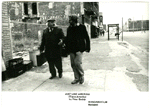
Just Like America (1987), Andor Lukács, Judy Todd and Ádám Szirtes
143 KByte
|
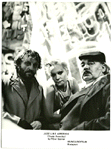
Just Like America (1987), Andor Lukács and Ádám Szirtes
138 KByte
|
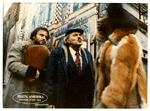
Just Like America (1987), Ádám Szirtes and Andor Lukács
191 KByte
|
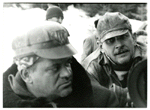
The Outpost (1994)
104 KByte
|
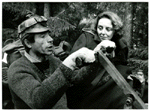
The Outpost (1994), Mari Nagy
140 KByte
|

Letgohang Vaska (1995)
147 KByte
|
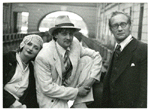
Letgohang Vaska (1995)
121 KByte
|
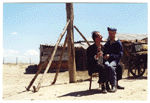
Passport (2001), Gergely Kocsis
147 KByte
|
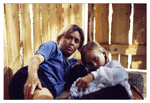
Passport (2001), Enikő Börcsök and Éva Fehér
159 KByte
|

Passport (2001)
163 KByte
|

The First Fling (1979, János Opoczki)
124 KByte
|
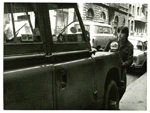
The First Fling (1979, János Opoczki)
129 KByte
|
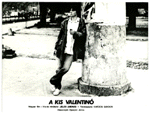
The First Fling (1979, János Opoczki)
134 KByte
|
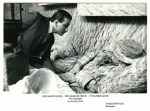
Dream Brigade (1983, András Jeles), Gyula oláh and Róbert Rátonyi
130 KByte
|
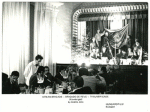
Dream Brigade (1983, András Jeles)
122 KByte
|
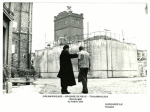
Dream Brigade (1983, András Jeles)
113 KByte
|
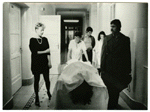
Dog's Night Song (1983, Gábor Bódy)
129 KByte
|
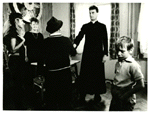
Dog's Night Song (1983, Gábor Bódy), Gábor Bódy and András Fekete
124 KByte
|

137 KByte
|

|



